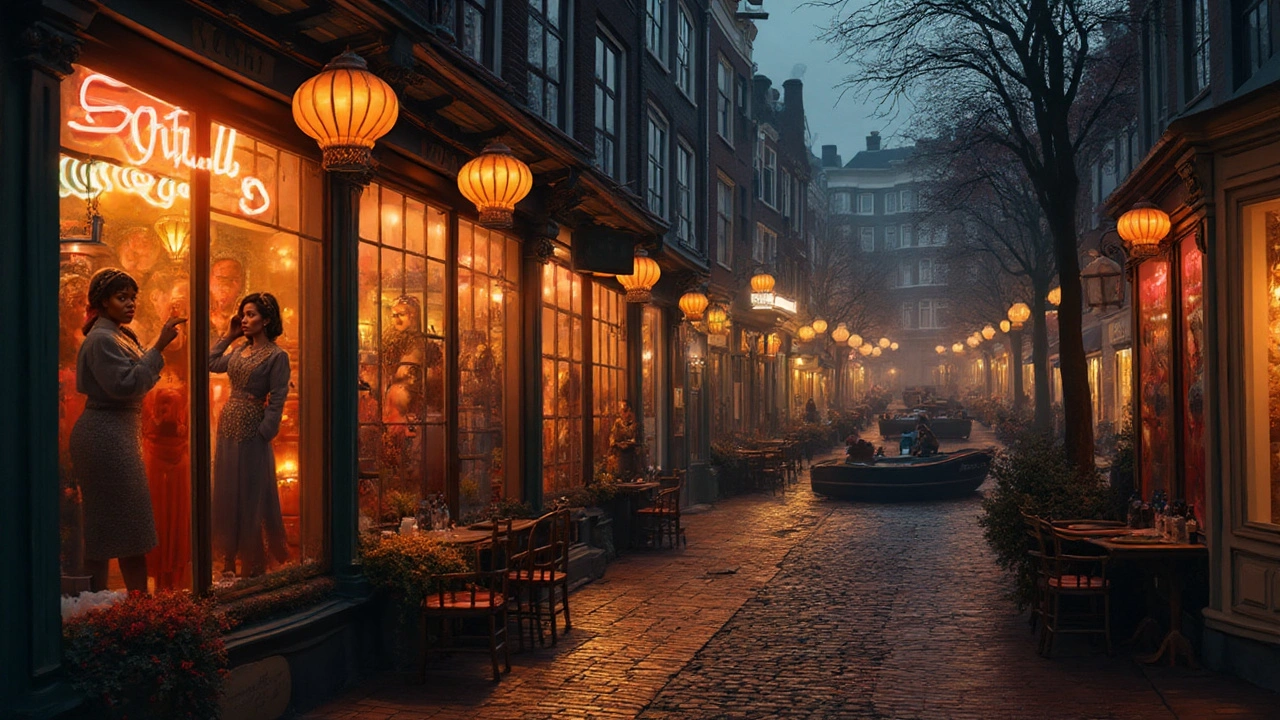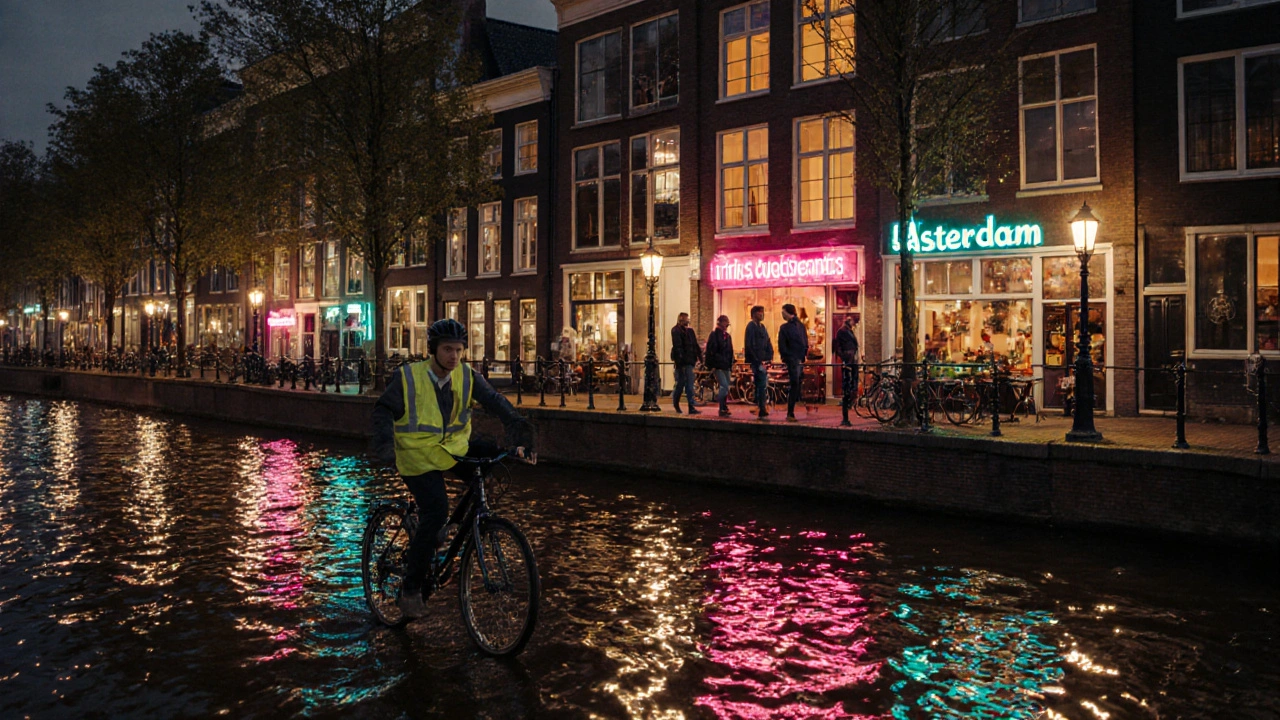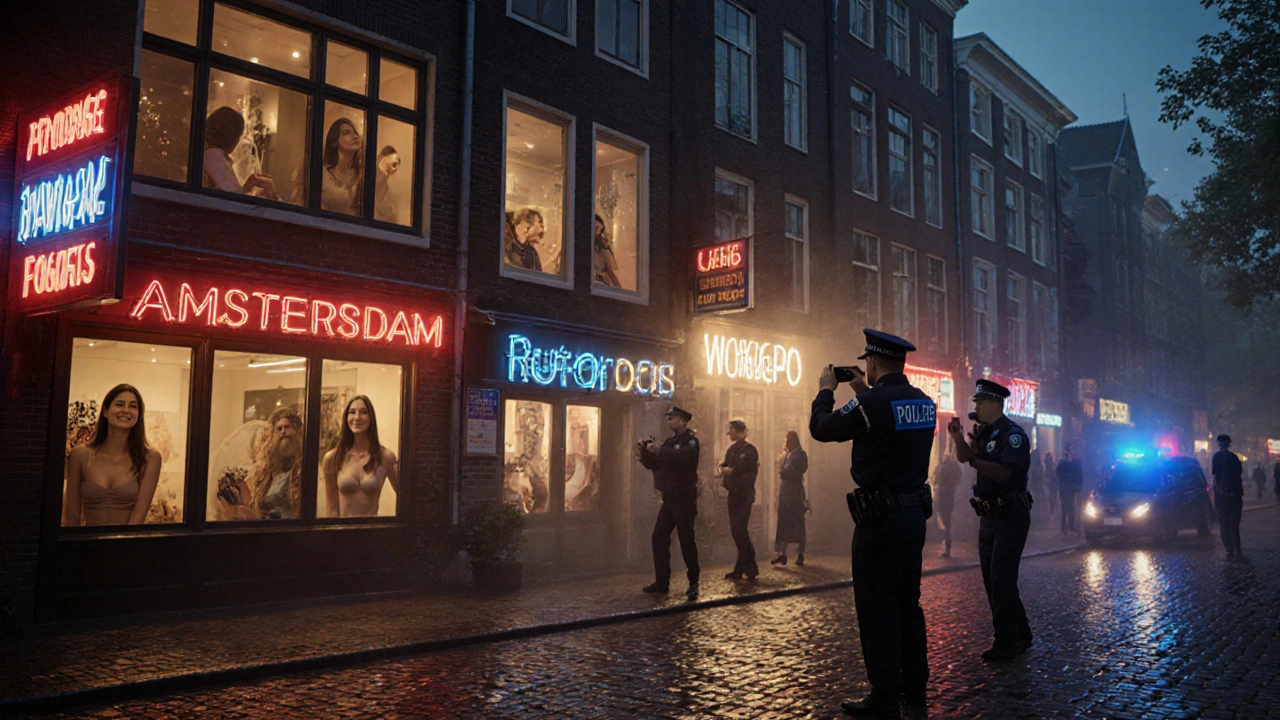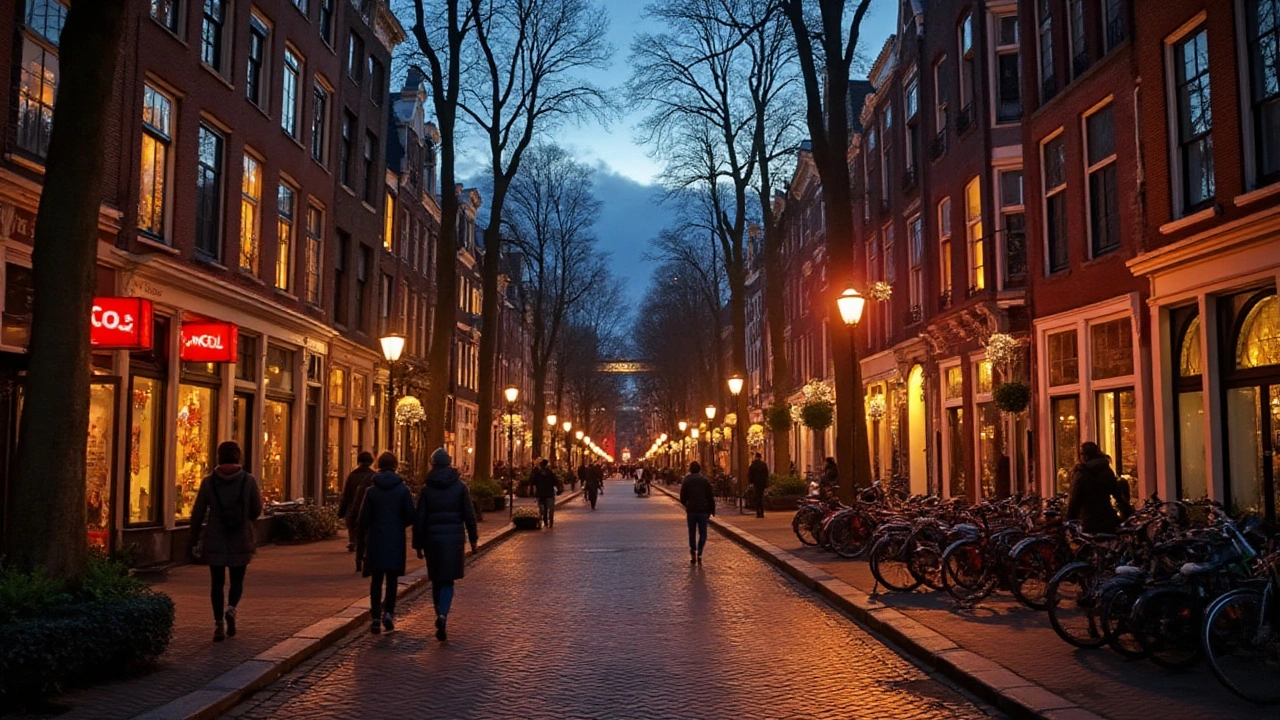
When someone first hears about Amsterdam’s famous call girls, they might picture only locals behind those red-lit windows. But here’s the real curveball: walk through the Red Light District on any Friday night, and you’ll hear Polish, Spanish, Romanian, and even some distant accents from South America. Immigration isn’t just a side note in Amsterdam’s sex industry—it’s right at the heart of it, weaving stories of hope, risk, and sometimes tough realities. The city’s liberal reputation and international airport make it a magnet not just for tourists, but also for workers drawn from every corner of the world. The result? A changing, colorful landscape that’s much more complex than outside myths would have you believe.
The Changing Faces Behind Amsterdam’s Red Lights
Go back twenty years, and the average Amsterdam call girl might have grown up just a few neighborhoods over, speaking Dutch with the street vendors and local shopkeepers. Fast forward to today, and things look vastly different. Immigration has massively shifted who’s standing behind the windows or arranging bookings as an escort. A recent Amsterdam municipality report found that over 60% of the sex workers registered legally in the city in 2024 came from countries outside the Netherlands—mainly from Eastern Europe and Latin America. Many come in search of better pay and safer, more regulated working conditions than what they can count on back home. It’s not all smooth sailing, though—workers often find themselves juggling two or more languages and dealing with culture shock right alongside everything else.
One Romanian woman I spoke to said she first came to the city thinking she could quickly save up some money, then go home. Ten years later, she’s still here, has learned Dutch, and now owns her own apartment. Her story is echoed in dozens of conversations with women who initially planned short stays but ended up building new lives. The impact shows up not just in the mix of languages echoing through the alleys, but also in the diversity of looks, services, and attitudes you find here.
But there’s another side: not every immigrant experience meets the dreams sold online. Some face more challenges integrating and navigating the legal framework. Dutch regulations require sex workers to register and follow local laws, but if your Dutch isn’t great, figuring out all the bureaucracy adds extra hurdles. That language barrier doesn’t just make paperwork slow—it can get in the way of asking for help, understanding rights, or reporting abuse. Still, the opportunity for a more stable, openly legal setup draws many compared to what they left behind—often risking far worse conditions in their own countries.
Economic Impacts: More Than Just Numbers
The economic influence of immigrant call girls in Amsterdam ripples well beyond the Red Light District’s bright neon. Their presence hasn’t just reshaped the supply of services—it’s also driven a steady shift in prices, client expectations, and how agencies operate. One overlooked fact: many local sex workers are now competing with newcomers willing to work for lower rates because the money still outpaces what they’d make at home. That means the average price for time with a call girl has held steady, or even dipped slightly, despite inflation hitting most other sectors of Amsterdam nightlife.
This isn’t just about numbers on a spreadsheet. When prices flatten or drop, it can impact safe working conditions, especially for those who feel pressure to take on more clients or longer shifts to make up the difference. Some veteran workers argue that the presence of newcomers, especially those with less experience or lower language skills, makes negotiation harder and tips the balance in favor of clients. On the flip side, immigration has also brought fierce competition to agencies, encouraging them to up their game. Clean, modern workspaces, flexible schedules, and better protections for workers have all become more standard as a result. You see escort agencies offering multilingual support, in-house security, and even free legal advice. Dutch authorities report that in the last five years, over 40% of registered agencies in the city have at least one staff member dedicated solely to worker support and integration.
So, is immigration bad for local workers? Or does it push everyone to step it up? Reality lands somewhere in the messy middle. While some locals have moved out of the city or left the business, others have found new niches, offering specialized services or catering to regulars from their own communities. The market is tough, for sure, but it’s also more varied and professional than ever. And that’s something you notice if you spend any time talking to people on both sides of the window.

Cultural Collisions and Connections in the Call Girl Scene
The Red Light District’s blend of cultures isn’t just a tourist spectacle—it drives real changes in how sex work happens here. Immigrant call girls bring with them traditions, boundaries, and ways of working all their own. This can mean offering different kinds of services, adding flair to performances, or even just a fresh take on style and personality. It’s not unusual now for clients to seek out certain “types”—maybe a Spanish speaker for a traveler from Argentina, or someone from Poland who feels more comfortable talking in their native tongue. Amsterdam’s agencies quickly picked up on this, tweaking their offerings to match the city’s ever-changing demographics and advertising specific nationalities as part of their marketing.
But there are darker sides to these cultural mixes too. Miscommunication and misunderstandings can cause trouble, especially when expectations don’t line up. In one case, a group of newcomers got into conflict with an agency over working hours because they were used to totally different practices back home. Local support groups say they’re seeing more cases where cultural barriers feed into disputes or leave women feeling isolated. That’s where mentorship programs have stepped up. There are now Dutch-led orientation sessions just for immigrant call girls, run by former workers who act as guides for newcomers. These sessions cover safety routines, language basics, and even advice on dealing with pushy clients.
Getting used to life in Amsterdam can be overwhelming—believe me, even ordering coffee here can feel intimidating if you don’t speak Dutch well. Now throw in working in a new industry, with unfamiliar rules and plenty of judgment from outside. It’s a lot to handle, and that’s even before you factor in the usual homesickness. Still, something interesting happens: friendships grow between women who otherwise might never meet, connecting across countries over meals, shared breaks, or swapping stories after long nights. In a way, the immigration wave has knit together an unlikely community inside those historic canal-side buildings.
Legal Hurdles and Safety Nets
Amsterdam likes to talk big about being open and progressive. But the legal side of the call girl business shows how complicated it really is when immigration ramps up. Dutch law officially allows sex work in licensed venues, but only for those who can get the right paperwork. For EU citizens, this is challenging but doable—get a tax number, register at city hall, and follow the rules. For anyone else, though, the maze of visa and residency rules can force women underground, cutting them off from social protections. Experts working with Stichting Sekswerk, a Dutch support organization, say that as of 2024, around 20% of immigrant call girls in Amsterdam operate without full legal paperwork, mainly those from non-EU countries.
Being unregistered leaves women open to exploitation. They’re less likely to call the police if something goes wrong or if a client threatens them, which only encourages bad behavior from the worst kind of customers. Dutch authorities know this—there’s been a recent push to make support services even more accessible without needing to ask for residency documents. It’s a work in progress, but these efforts mean there are now anonymous walk-in clinics, language support phones, and buddy programs that don’t require full ID checks. Some agencies have even started partnering with legal aid groups to give free help to anyone, not just those with the “right” passport stamps.
A big tip for anyone coming into this business: don’t rush your paperwork or ignore local rules, even if it takes a bit longer. Plenty of Facebook groups and expat networks exist just to guide newcomers through the legal jungle, and the city has multilingual counselors who can walk you through it all. The first weeks might feel like red tape hell, but getting set up legally pays back tenfold in safety and freedom. Remember, Amsterdam’s system isn’t perfect, but workers with official status have a lot more protection and bargaining power if things turn sour.

Trends, Challenges, and What the Future Holds
So where does this all leave Amsterdam’s call girls as we look ahead? Immigration isn’t slowing down—in fact, since nearby EU countries relaxed border restrictions in 2022, record numbers of new arrivals have registered for work in the city. With travel now bouncing back after the last pandemic years, old patterns are reemerging but with some twists. Agencies now regularly advertise in Spanish, Hungarian, and Portuguese. Broader European economic struggles are pushing more people to consider a move, including to industries they might not have thought about before. The city even sponsored a 2025 study finding that the average newcomer in sex work is three years younger than the local average, and more likely to have college education than a decade ago.
Still, new arrivals face many hard truths. Gentrification is driving up Amsterdam’s housing costs, forcing many to share tiny rooms or couches far from city center. Police crackdowns on illegal windows and pop-up brothels mean spots fill up fast with those who have good connections or agency backing. For undocumented or lower-skilled workers, riskier underground markets are a constant threat. But the city has also seen a strong pull toward organizing—workers are banding together for better conditions, legal recognition, and a voice in shaping policy. The recent wave of digital organizing (yes, even WhatsApp groups) is helping many stay informed and united, at least at street-level.
And what does this mean if you’re a client, a traveler, or even just a curious local? Expect a scene that’s always shifting. You might book with someone who just arrived last week or with a seasoned pro who’s lived here for years, both shaped by a fast-changing, multicultural industry. The experience remains uniquely Amsterdam: open, surprising, and forever balancing the mix of freedom and rules. For me, walking through with Milo on a sunny afternoon (yes, we avoid the peak hours), I can’t help but wonder what stories hide behind those windows—an endless turnover that’s both tough and full of possibility. If you want a tip: keep an open mind, ask questions, and don’t judge too quickly. The person on the other side of the glass might just be living a version of the Amsterdam dream—one with immigrant roots, local grit, and acts of resilience you’d never expect.





